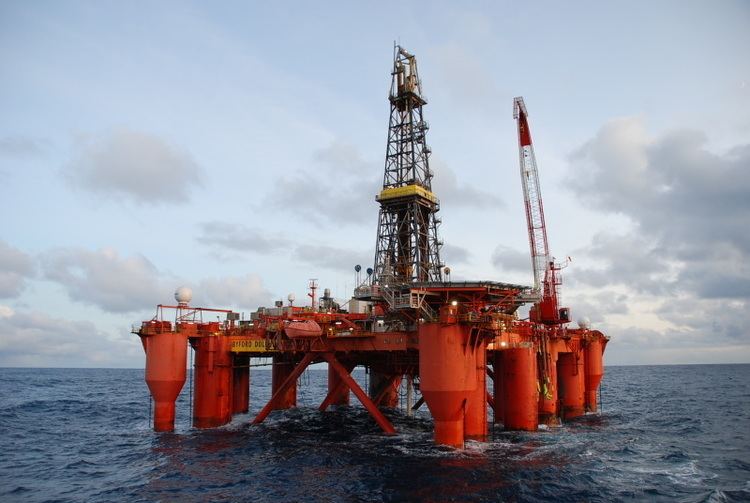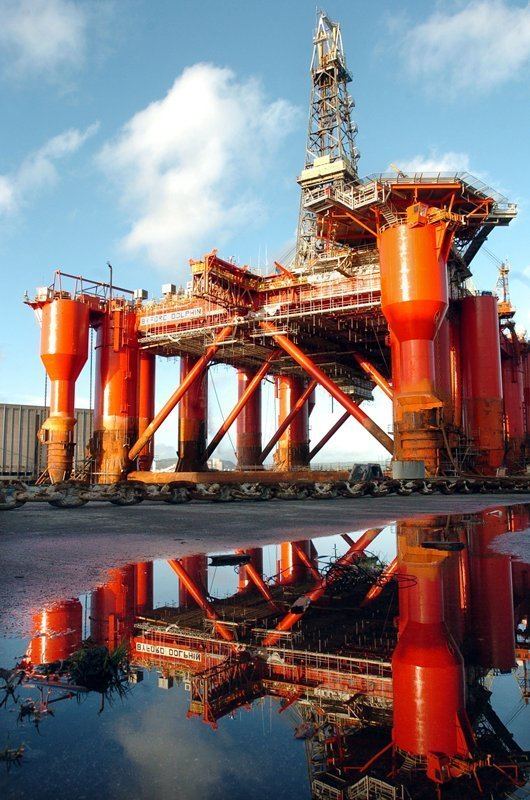Let me tell you something that's gonna blow your mind—literally. On February 17, 1983, the Byford Dolphin, a semi-submersible drilling rig operating in the North Sea, experienced one of the most catastrophic incidents in maritime history: an explosive decompression. This event wasn't just a freak accident; it was a chilling reminder of how dangerous deep-sea operations can be. So buckle up, because we're diving deep into the story behind the Byford Dolphin and uncovering what went wrong that fateful day. And yeah, it's gonna get intense.
Now, if you're anything like me, you might be thinking, "What the heck is explosive decompression?" Well, buckle up, because I'm about to break it down for you. Explosive decompression happens when there's a sudden and massive pressure change—like, BOOM! In the case of the Byford Dolphin, it wasn't just some random occurrence; it was a perfect storm of engineering flaws, human error, and sheer bad luck. This incident has since become a textbook example of what not to do in offshore drilling operations.
But why should you care? Because this story isn't just about a single tragedy. It's about lessons learned, lives lost, and the importance of safety protocols in industries where the stakes are sky-high—or should I say, sea-high? So let's dive in, shall we? The water's fine—well, maybe not that fine, but you'll see what I mean.
Read also:What Happened To Joe Armacost On The Dan Bongino Show The Untold Story
What Exactly Happened on the Byford Dolphin?
Okay, so here's the lowdown: the Byford Dolphin was drilling off the coast of Norway when disaster struck. A sudden pressure imbalance caused a deadly explosion in one of its chambers, leading to the tragic loss of six lives. The crew was performing routine maintenance on a blowout preventer (BOP) when the unthinkable happened. A valve was opened without proper pressure equalization, causing a catastrophic chain reaction.
Let’s break it down step by step:
- The rig was conducting routine maintenance on its BOP system.
- A valve was opened without ensuring proper pressure balance.
- This resulted in an explosive decompression, releasing immense pressure.
- Six crew members were trapped in the affected chamber and perished.
It's important to note that this wasn't just a random accident. The Byford Dolphin incident exposed critical flaws in safety protocols, design, and training. It wasn't just about one mistake—it was a series of errors that compounded into a nightmare scenario.
Understanding Explosive Decompression
So, what exactly is explosive decompression, and why is it so dangerous? Simply put, it's the rapid release of pressure from a confined space. Think of it like popping a balloon—only instead of a harmless pop, you're dealing with thousands of pounds of pressure being released all at once. In the case of the Byford Dolphin, the pressure difference between the inside and outside of the chamber was so extreme that it caused a violent explosion.
Here’s the science behind it:
- Pressure inside the chamber was significantly higher than outside.
- When the valve was opened, the pressure difference caused a violent rush of air and debris.
- This created a shockwave that was both destructive and deadly.
Explosive decompression isn't just a concern for offshore rigs—it's also a risk in aviation, space travel, and any environment where pressure differences exist. But the Byford Dolphin incident remains one of the most infamous examples in history.
Read also:Mugshots Brockton Ma The Inside Scoop You Need To Know
Biography of the Byford Dolphin
Before we dive deeper into the tragedy, let's take a moment to understand the Byford Dolphin itself. This wasn't just any rig—it was a state-of-the-art semi-submersible drilling platform built in the late 1970s. It was designed to operate in harsh conditions, like those found in the North Sea. But even the best technology can fail if human error and design flaws come into play.
Here’s a quick rundown of the Byford Dolphin:
| Specification | Details |
|---|---|
| Year Built | 1979 |
| Operator | Sedco Forex |
| Location | North Sea, Norway |
| Depth Capability | 1,000 meters |
| Crew Capacity | 120 members |
As you can see, the Byford Dolphin was no ordinary rig. It was a symbol of technological advancement and engineering prowess. But as we'll soon discover, even the best equipment is only as good as the people operating it.
Human Error: The Silent Culprit
When it comes to disasters like the Byford Dolphin, it's easy to point fingers at mechanical failure. But let's be real—the real culprit here was human error. Investigations revealed that several critical mistakes were made leading up to the incident. For starters, the crew failed to properly equalize pressure before opening the valve. This might sound like a simple oversight, but in high-pressure environments, even small mistakes can have deadly consequences.
Here’s a breakdown of the human errors involved:
- Failure to follow proper safety protocols.
- Lack of communication between crew members.
- Inadequate training for dealing with high-pressure scenarios.
It's important to note that these errors weren't made in a vacuum. The culture of the industry at the time often prioritized speed and efficiency over safety. This mindset, combined with a lack of proper training and communication, set the stage for tragedy.
Lessons Learned from Human Error
So, what did the industry learn from this disaster? First and foremost, the importance of adhering to safety protocols cannot be overstated. Since the Byford Dolphin incident, there have been significant improvements in training, communication, and safety standards across the offshore drilling industry.
Design Flaws: A Recipe for Disaster
While human error played a major role in the Byford Dolphin tragedy, design flaws were also a contributing factor. The rig's chambers were not designed to handle the extreme pressure differences that occurred during the incident. This oversight highlighted the need for more robust engineering standards in offshore drilling operations.
Here’s a closer look at the design flaws:
- Chambers lacked proper pressure relief mechanisms.
- Valves were not designed to handle sudden pressure changes.
- Safety systems were inadequate for high-pressure environments.
These flaws weren't just isolated to the Byford Dolphin. They were indicative of broader issues within the industry at the time. As a result, regulatory bodies and engineering firms have since implemented stricter design standards to prevent similar incidents in the future.
Improving Design Standards
Following the Byford Dolphin tragedy, the offshore drilling industry underwent a major overhaul in terms of design and safety standards. New regulations were introduced, requiring rigs to be equipped with advanced pressure relief systems and fail-safe mechanisms. This shift has undoubtedly saved countless lives and prevented further disasters.
The Impact on the Industry
The Byford Dolphin incident had a profound impact on the offshore drilling industry. It forced companies to re-evaluate their safety protocols, training programs, and engineering standards. The tragedy served as a wake-up call, reminding everyone involved that cutting corners in the name of profit could have devastating consequences.
Here’s how the industry responded:
- Increased investment in safety training and equipment.
- Stricter regulatory oversight and compliance requirements.
- Development of advanced safety technologies and systems.
These changes have made the industry safer, but the memory of the Byford Dolphin serves as a constant reminder of the importance of vigilance and preparedness.
Remembering the Victims
As we discuss the technical aspects of the Byford Dolphin tragedy, it's important to remember the human cost. Six lives were lost that day, and their sacrifice should never be forgotten. The industry has made significant strides in improving safety, but the memory of those who lost their lives continues to drive change and innovation.
Modern-Day Implications
Fast-forward to today, and the lessons learned from the Byford Dolphin incident are more relevant than ever. With the increasing demand for offshore drilling and the push for renewable energy sources, the need for robust safety standards and advanced technologies has never been greater.
Here’s how modern practices have evolved:
- Advanced pressure monitoring systems to prevent decompression events.
- Improved communication and coordination among crew members.
- Stricter regulatory frameworks and compliance standards.
While the industry has come a long way, the risk of explosive decompression still exists. That's why continuous improvement and vigilance are essential.
The Future of Offshore Safety
Looking ahead, the future of offshore safety is bright—but not without challenges. Technological advancements, such as AI-driven monitoring systems and automated safety protocols, are helping to mitigate risks. However, the human element remains critical. Proper training, clear communication, and a commitment to safety must always be at the forefront of operations.
Here’s what the future holds:
- Increased adoption of AI and machine learning for predictive maintenance.
- Development of new materials and technologies to enhance rig safety.
- Ongoing education and training for crew members and engineers.
As we continue to push the boundaries of offshore exploration, the lessons of the Byford Dolphin will remain a guiding light in our quest for safer operations.
Conclusion: Lessons from the Deep
So there you have it—the story of the Byford Dolphin and the explosive decompression tragedy that changed the offshore drilling industry forever. From human error to design flaws, this incident exposed critical weaknesses that had long been overlooked. But it also sparked a revolution in safety standards and engineering practices that continue to shape the industry today.
As we reflect on the lessons learned, let's not forget the six lives lost that day. Their sacrifice has driven meaningful change, ensuring that future generations of offshore workers can operate in safer environments. So here's the call to action: share this story, learn from it, and never underestimate the importance of safety and vigilance.
And hey, if you're still reading this, congrats—you've made it through a deep dive into one of the most significant maritime tragedies in history. Now go forth and spread the word—because knowledge is power, and power saves lives.
Table of Contents
What Exactly Happened on the Byford Dolphin?
Understanding Explosive Decompression
Biography of the Byford Dolphin
Human Error: The Silent Culprit


